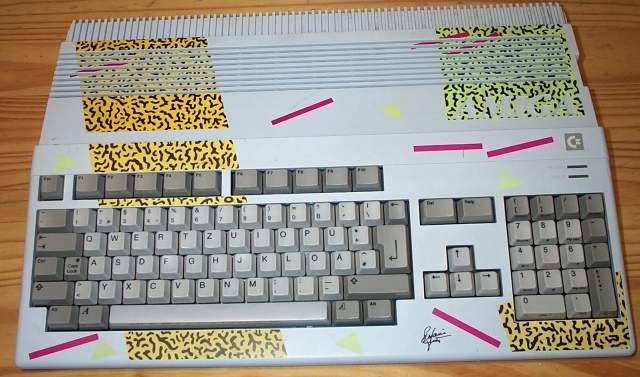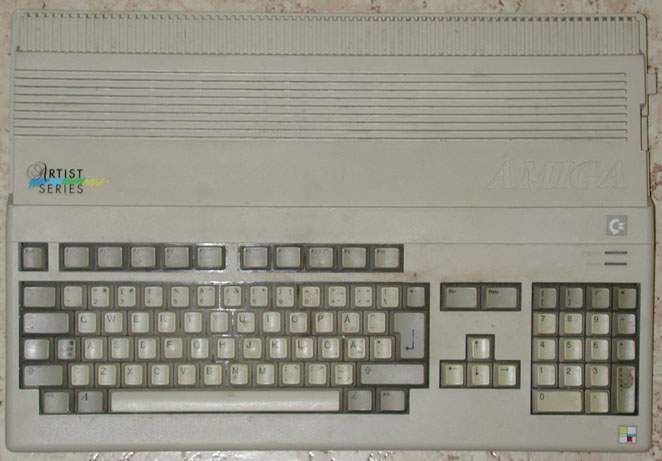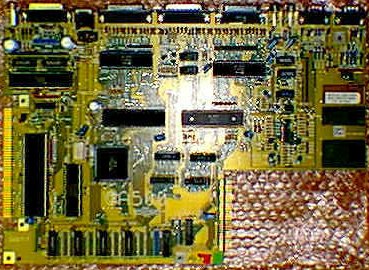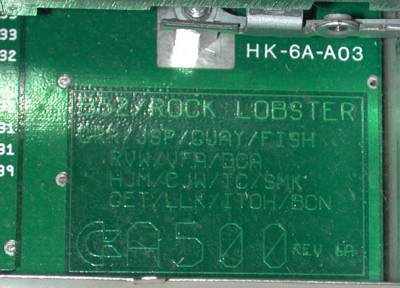
Picture of a Kickstart 1.3 A500 connected to a Commodore 1084 monitor

Picture of a Kickstart 1.3 A500 connected to a Commodore 1084 monitor

Special edition German A500. Two versions were made, one with a boing ball theme and one with a tiger theme

Special edition A500. "The artist series"

A 500 Motherboard Revision 6A

Close-up of the famous B-52/Rocklobster label
Standard Specifications
NOTE: The specifications here are specific to the A500 and do not necessarily apply to the A500+
| Case Type: | Computer in a keyboard |
| Processor: | 68000@7.14Mhz |
| MMU: | None |
| FPU: | None |
| Chipset: | OCS |
| Kickstarts: | V1.2 (Single 40pin DIL) V1.3 (Single 40pin DIL) |
| Expansion Slots: | 1 x 86pin Side Expansion slot 1 x 56pin Trapdoor Slot |
| Standard CHIP RAM: | 512K |
| RAM sockets: | None |
| Hard Drive Controllers: | None |
| Drive Bays: | 1 x Custom Floppy Drive Bay |
| Expansion Ports: | 1 x 25pin Serial 1 x 25pin Parallel 1 x 23pin RGB Video 1 x 23pin External Floppy 2 x 9pin Joystick/Mouse 2 x RCA Audio (Left/Right) |
| Floppy Drive: | 1 x Internal 880K Floppy Drive |
| Motherboard Revisions: | Rev 3.x (Very buggy, avoid if possible) Rev 5.x (8370 Agnus (NTSC), 8371 Agnus (PAL)) Rev 6A (8372A Agnus) Rev 6.x (8372A Agnus) Rev 8A |
| Battery Backed Up Clock: | No |
The A500 was one of the most popular Amiga models ever made, partly because it was extremely cheap in comparison to the big box models and partly because it was targetted almost exclusively at gamers. Although the A500+ looks almost identical to the A500, there are considerable differences between the two models. It is usually possible to tell the difference between the two models (other than by the name on the case) by the colour of the LEDs they use. The A500 usually used a red power light and green floppy light, whereas the A500+ used a green power light and an orange floppy light. The A500 was usually supplied with the A520 to allow it to be connected directly to a standard television. The A500 was supplied with 512K of CHIP RAM by default. Earlier revisions of the A500 could only address 512K of CHIP but later revisions containing the 8372 Agnus could address 1MB (but were still supplied with 512K).
Thanks to Greg Scott, Marius Lauritzen, Iggy Drougge and Markus Nyman